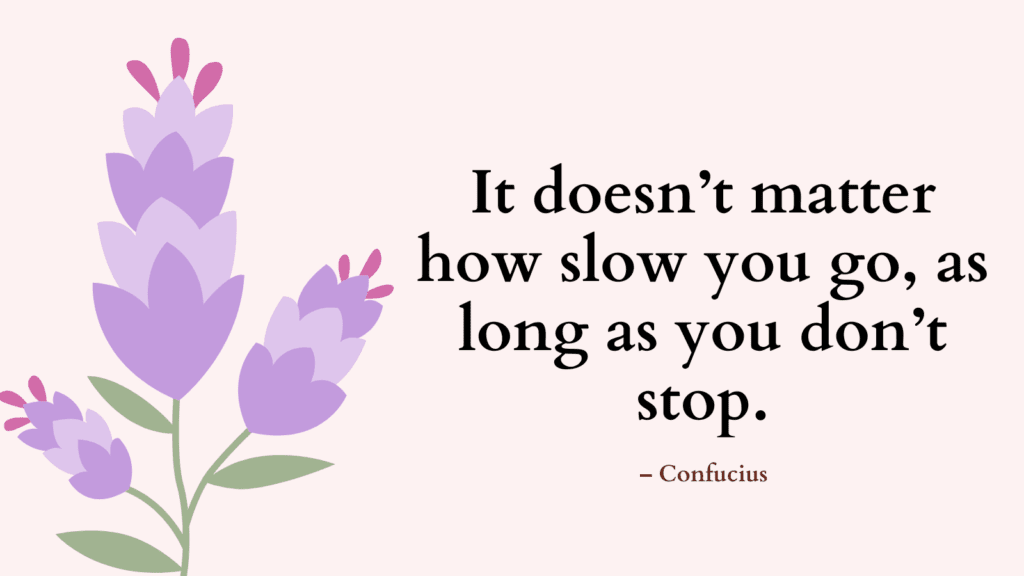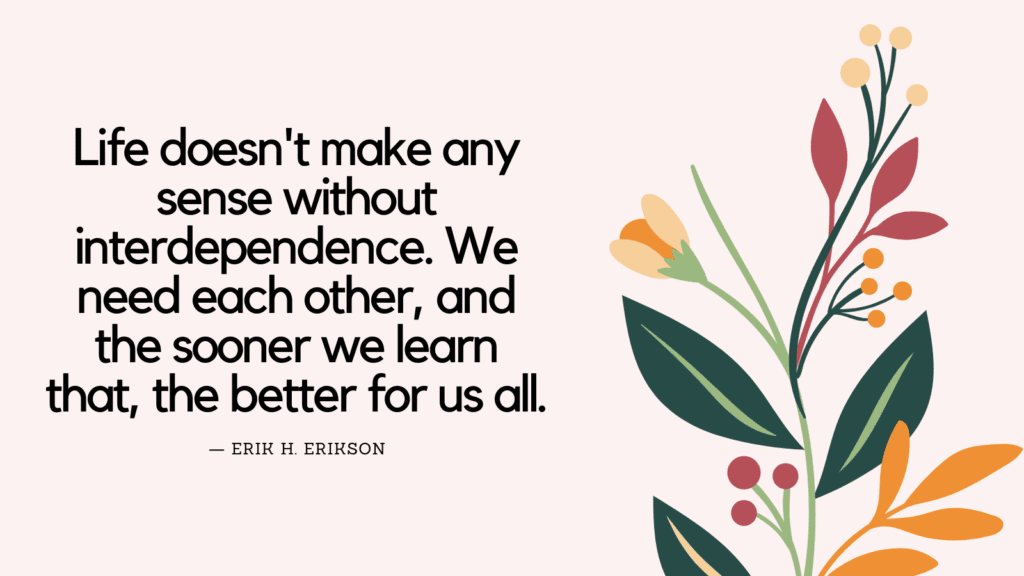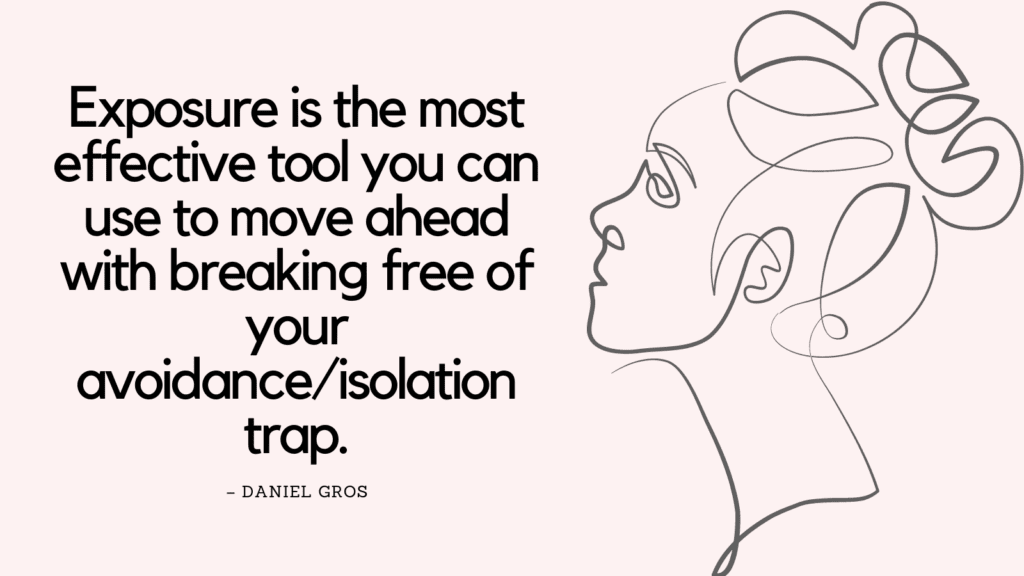This post contains some of the best complex PTSD quotes that will make you feel seen.
What Is Complex PTSD?
Post-traumatic Stress Disorder (PTSD) is often associated with events such as car accidents, natural disasters, or acts of violence.
PTSD refers to the presence of symptoms, such as intrusive memories and flashbacks, avoiding situations that remind you of the trauma, overwhelming feelings of fear, guilt, or shame, etc.
Complex PTSD or C-PTSD is another form of post-traumatic stress that occurs as a result of long-term exposure to traumatic stress, rather than in response to a single incident (e.g. childhood trauma).
According to the World Health Organization’s International Classification of Diseases (ICD-11), a diagnosis of C-PTSD includes the symptoms of PTSD, with three additional categories of symptoms: difficulties with emotion regulation, an impaired sense of self-worth, and interpersonal problems.
Related: Why Is Trauma Therapy So Hard? (+Best Trauma Healing Exercises To Support Your Recovery)
Complex PTSD Quotes
1. “Complex post-traumatic stress disorder (C-PTSD) is a response to traumatic events that were ongoing or repeated. With childhood trauma, these events occurred in your early years and were likely to be unpredictable, chaotic, or terrifying. You may have had parents or caregivers who abused, neglected, or abandoned you repeatedly, or you may have seen repeated traumatic events.” – Arielle Schwartz
2. “The “complex” aspect of C-PTSD means that the trauma was at an early enough age or was repeated often enough that it affected your emotional development.” – Arielle Schwartz
3. “C-PTSD typically arises as a result of ongoing stress or repeated traumatic events that occur during childhood and is sometimes referred to as developmental trauma disorder (DTD).” – Arielle Schwartz
Related: What Is Hyper Independence Trauma?(+4 Steps To Healing)
4. “C-PTSD often arises from events that were both threatening and unescapable, though it can also be a result of ongoing emotional neglect, during which time you were chronically rejected or left alone for extended periods. Often this lack of nurturance from loving caregivers is coupled with inadequate protection from dangerous situations or people.” – Arielle Schwartz
5. “C-PTSD is associated with intrusive flashbacks, feelings of panic, overwhelming feelings of rage, debilitating feelings of hopelessness, chronic feelings of shame, a harsh and unrelenting “inner critic,” and a lack of trust in other people.” – Arielle Schwartz
6. “Childhood trauma has a profound impact on the body and mind, and this carries into adulthood. As a survivor, you might hold beliefs that you are damaged, that you are not lovable, or that you cannot trust anyone. You might have feelings of shame, unworthiness, or helplessness. Perhaps you feel plagued by anxiety or believe that you don’t belong in this world. These kinds of thoughts and feelings might lead you to withdraw from relationships in order to avoid further rejection or hurt. Or, you might use food, alcohol, or drugs to disconnect from or numb yourself to the pain. If you relate to these symptoms, it is important to know that you are not alone.” – Arielle Schwartz
7. “Repeated trauma in childhood forms and deforms the personality. The child trapped in an abusive environment is faced with formidable tasks of adaptation. She must find a way to preserve a sense of trust in people who are untrustworthy, safety in a situation that is unsafe, control in a situation that is terrifyingly unpredictable, power in a situation of helplessness. Unable to care for or protect herself, she must compensate for the failures of adult care and protection with the only means at her disposal, an immature system of psychological defenses.” ― Judith Lewis Herman
Related: Undermothered: How to Mother Yourself Using These Practical 10 Strategies?
8. “It takes tremendous courage to confront childhood trauma. Like searching in the dark for an unknown source of pain, the process of healing can feel daunting, if not terrifying.” – Arielle Schwartz
9. “Unresolved childhood trauma has significant consequences on mental and emotional health. You might alternate between feeling cut off and feeling flooded with emotions such as fear, anger, or despair. Perhaps you suffer from anxiety or depression. Maybe you resort to disconnection or dissociation to get through the day. Relationships are often compromised. Your physical health may also be impacted by illness or chronic pain. If you find yourself struggling with any of these symptoms, this book is for you.” – Arielle Schwartz
10. “If you were neglected or abused as a child, your primary orientation to the world is likely to be one of threat, fear, and survival. It’s only natural that a childhood experience with untrustworthy parents or caregivers would leave you untrusting or confused about what constitutes a loving relationship.” – Arielle Schwartz
11. “Fear and lack of safety might compel you to continuously scan your environment for potential threats. You may have relied upon coping strategies to survive, such as dissociation, a protective mechanism that disconnects you from threatening experiences. If you can relate to these qualities, you may also identify with related issues such as self-criticism, emotional suffering, and relationship difficulties. If this describes you, it is not your fault and you have not failed. You have a form of post-traumatic stress disorder (PTSD).” – Arielle Schwartz
Related: How To Heal From The Father Wound In 7 Steps (+FREE Worksheets)
12. “Growing up afraid has ramifications on cognitive, emotional, and physical development that can persist into adulthood—until you have the necessary support to heal your wounds. C-PTSD is not a character weakness; it is a learned stress disorder.” – Arielle Schwartz
13. “Complex PTSD is a set of symptoms that are the result of pain and stress that often begin at a very early age—they could be all you’ve known. Naturally, these early experiences shape your perspective of yourself and the world.” – Arielle Schwartz
14. “Children require consistency. Caregivers who are predictable help children develop clear expectations about themselves and the world. Such predictability provides a groundwork of safety and allows a child to adapt to the many inner changes they go through during early development. But this isn’t the case in a household of neglect or abuse.” – Arielle Schwartz
Related: Best 10 Proven Ways to Heal From Childhood Trauma Splitting
15. “C-PTSD often arises out of interactions that occur in the first years of life. Sometimes the trauma begins within the first months of being born. Such early childhood memories are not like typical memories that occur later in life. You may not have images or a clear story. Instead, you might experience emotions without understanding why, or even physical sensations of unknown origin.” – Arielle Schwartz
16. “Growing up afraid has ramifications on all aspects of development— cognitive, emotional, and physical. The costs of childhood trauma can persist into adulthood until you find sufficient support to heal your past.” – Arielle Schwartz
17. “In order to get away from memories of childhood trauma, it is common to develop avoidance strategies. Sometimes this involves avoiding situations, people, and places that serve as reminders of the past. Avoidance is also maintained by defenses such as denying the past, repressing feelings, idealizing parents, minimizing the pain, or dissociating. It is common to use substances or maintain other addictive behaviors such as emotional eating or excessive exercising to avoid feeling pain.” – Arielle Schwartz
Related: Best 15 Inner Child Exercises: How To Connect With Your Inner Child (& Heal Your Childhood Wounds)
18. “Dissociation, like all other symptoms of C-PTSD, is a learned behavior that initially helped you cope with a threatening environment. A neglected or abused child will rely upon built-in, biological protection mechanisms for survival to “tune out” threatening experiences. In adulthood, dissociation becomes a well-maintained division between the part of you involved in keeping up with daily tasks of living and the part of you that is holding emotions of fear, shame, or anger. You might feel that it’s just too much to think about what happened.” – Arielle Schwartz
19. “Shame is characterized by the belief that you are “bad.” This emotion is based upon a distorted sense of yourself as being unworthy, damaged, or a failure. Young children are completely dependent upon caregivers for a sense of safety and connection in the world. When parents are frightening, abusive, or unavailable, children can feel confused about who is at fault. When children witness something bad, they feel bad.” – Arielle Schwartz
20. “Cptsd is a more severe form of Post-traumatic stress disorder. It is delineated from this better known trauma syndrome by five of its most common and troublesome features: emotional flashbacks, toxic shame, self-abandonment, a vicious inner critic and social anxiety.” – Pete Walker
21. “If you’ve grown up in a chronically threatening environment, you most likely had to adapt to survive. Adaptations happen emotionally, behaviorally, and within the nervous system—these characteristics for Complex PTSD (C PTSD).” – Sharon Copeland
22. “Emotional flashbacks are perhaps the most noticeable and characteristic feature of Cptsd. Survivors of traumatizing abandonment are extremely susceptibility to painful emotional flashbacks, which unlike ptsd do not typically have a visual component.” – Pete Walker
23. “Toxic shame, explored enlighteningly by John Bradshaw in Healing The Shame That Binds, obliterates a Cptsd survivor’s self-esteem with an overwhelming sense that he is loathsome, ugly, stupid, or fatally flawed. Overwhelming self-disdain is typically a flashback to the way he felt when suffering the contempt and visual skewering of his traumatizing parent. Toxic shame can also be created by constant parental neglect and rejection.” – Pete Walker
24. “Unfortunately, individuals with Complex PTSD have a hard time orienting to safety even in situations in which there’s no present threat. This is since it may be hard to differentiate between experiences that happened in the past and what’s going on today, in the current moment. The past and present seem to get blurred because of the physiological alarm bells that continue to sound. This procedure is described as attentional threat bias, a factor that provides and exacerbates post-traumatic stress conditions.” – Sharon Copeland
25. “I have witnessed many clients with Cptsd misdiagnosed with various anxiety and depressive disorders. Moreover, many are also unfairly and inaccurately labeled with bipolar, narcissistic, codependent, autistic spectrum and borderline disorders. [This is not to say that Cptsd does not sometimes co-occur with these disorders.]” – Pete Walker
26. “Reducing Cptsd to “panic disorder” is like calling food allergies chronically itchy eyes. Over-focusing treatment on the symptoms of panic in the former case and eye health in the latter does little to get at root causes. Feelings of panic or itchiness in the eyes can be masked with medication, but all the associated problems that cause these symptoms will remain untreated.” – Pete Walker
27. “While the origin of Cptsd is most often associated with extended periods of physical and/or sexual abuse in childhood, my observations convince me that ongoing verbal and emotional abuse also causes it.” – Pete Walker
28. “Furthermore, Cptsd can also be caused by emotional neglect alone.” – Pete Walker
29. “Trauma takes its toll on the body in many ways. We need to comprehend the physical damage that Cptsd wreaks on our bodies to motivate us to adopt practices that help us to heal on this level.” – Pete Walker
30. “Cptsd is a syndrome of the dearth of unconditional love, or what the great therapist, Carl Rogers, called “unconditional positive regard”. Cptsd can also occur when unconditional love is shut off in an all-or-nothing way in early childhood” – Pete Walker
31. “Physical and sexual abuse are the most obvious traumas that a child can experience, especially when they are ongoing. However, much that is also traumatic goes unnoticed in Cptsdengendering families. This often occurs because parental acts of physical abuse are more blatant than acts of verbal and emotional abuse and neglect. It appears to me that just as many children acquire Cptsd from emotionally traumatizing families as from physically traumatizing ones.” – Pete Walker
32. “The continuum of Cptsd ranges from mild neurosis to psychosis, and from highly functioning to non-functioning. Its severity ranges from having extended periods without flashbacks to being in full flashback horror much of the time.” – Pete Walker
33. “The fact that verbal and emotional abuse can be traumatic is lost on many childhood trauma victims, though it is rarely lost on recovering victims of cult brainwashing who also are prone to developing Cptsd.” – Pete Walker
34. “Many Cptsd survivors never thrived as babies. I believe that many suffered painful bouts of lingering near the end of the continuum that feels death-like. Several of my clients commonly have quipped that they “feel like death warmed over” when they are in a flashback.” – Pete Walker
35. “Cptsd-inducing families however loathe angry crying, and many can find professionals to back them up for routinely leaving babies and very young children to “cry it out” on their own.” – Pete Walker
Related: Inner Child Wounds Test (+4 Attachment Imagery Exercises To Heal Inner Child Wounds)
Inner Child Healing Exercises PDF
Healing From Complex PTSD Quotes
36. “In Cptsd-engendering families, the absence of care and concern is extreme. A caretaker is rarely or never available for support, comfort or protection.” – Pete Walker
37. “Even better news is that Cptsd, when efficiently managed, eventually bestows gifts.” – Pete Walker
38. “As stated earlier, recovery from Cptsd is complex. Sometimes, it can feel so hopelessly complex that we totally give up and get stuck in inertia for considerable lengths of time. This is why it is so important to understand that recovery is gradual and frequently a backwards and forwards process.” – Pete Walker
39. “Although we often work on many levels of recovering at the same time, recovering is to some degree progressive. It begins on the cognitive level when psychoeducation and mindfulness helps us understand that we have Cptsd. This awakening then allows us to learn how to approach the journey of deconstructing the various life-spoiling dynamics of Cptsd.” – Pete Walker
40. “Healing from Complex PTSD is, above all, complex. This is important to emphasize because there are numerous one dimensional approaches to trauma that bill themselves as cure-alls. In my opinion, however, singular approaches are unable to address all the levels of wounding that combine to cause Cptsd.” – Pete Walker
41. “Healing from C-PTSD often requires a positive relationship with a therapist who fully accepts you for who you are and helps you reclaim your trust in other people.” – Arielle Schwartz
42. “Healing childhood trauma involves a balance: attending to the wounds of the past while living in the present. Simply attending to the demands of daily living can feel insurmountable at times. Going to the store to buy groceries, handling stress at work, raising children, or relating to your spouse can feel overwhelming when you are flooded with anxiety or shut down in shame. Having strategies to remain mindful and feel grounded is essential. These tools will allow you to turn toward your pain without creating additional distress.” – Arielle Schwartz
Related: 7 Trauma Release Exercises To Support Your Recovery After Trauma
43. “When you are empowered with knowledge and awareness, you can deepen your self-acceptance and reduce the difficult emotions that often accompany developmental trauma.” – Arielle Schwartz
44. “Healing asks that you turn toward your past to find relief from the weight of trauma. As a result, you become less defined by your history and have greater choice about your future.” – Arielle Schwartz
45. “However painful it might seem at first, unpacking the burdens of your traumatic history can be thought of as profound self-care. As if moving into a larger, more spacious home, you are unpacking the painful memories of the past, and making room for more positive emotions. In the process of unpacking, you want to pace yourself so you do not get overwhelmed. You bring stories of pain out of hiding into the light of your awareness. By allowing each memory to find its right place, each one can be reviewed, understood, and worked through.” – Arielle Schwartz
46. “A diagnosis is a good thing, not a bad thing. Keep in mind that an accurate diagnosis becomes a part of your growing toolbox of knowledge that will help you better understand yourself and move forward with wisdom. A diagnosis can allow you and your treatment providers to work together to face and address your symptoms.” – Arielle Schwartz
Related: Top 25 Inner Child Journal Prompts To Heal Your Inner Wounds

References
- Complex post-traumatic stress disorder – Wikipedia
- What is complex PTSD? – Mind
- Complex PTSD – Post-traumatic stress disorder – NHS (www.nhs.uk)
- Complex PTSD: Symptoms, Tests, Treatment, and Finding Support (healthline.com)
- Complex PTSD (CPTSD): Causes, symptoms, behaviors, recovery (medicalnewstoday.com)
- What Is Complex PTSD? The Symptoms Caused By Chronic Trauma (webmd.com)



